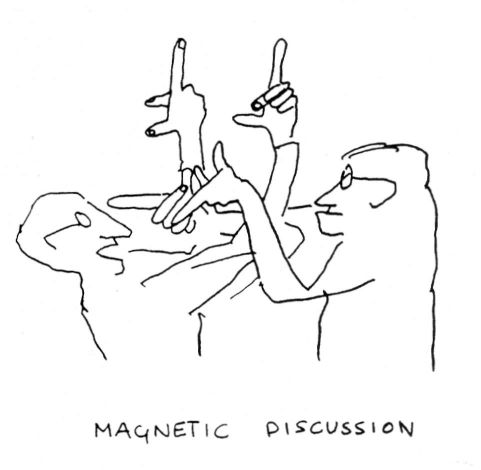
Fig. 1. Bruno Touschek funny about "right" or "left" hand rule.
Discovering electromagnetic induction: interactive multimedia path
A. Karbowski, K. Służewski, G. Karwasz, M. Juszczyńska
Institute of Physics, Nicolaus Copernicus University, 5
Grudziądzka, 87-100 Torun, Poland
R. Viola, M. Gervasio, M. Michelini
Research Unit in Physics Education University of Udine, Via delle
Scienze 208, Udine, 33100, Italy
Typical educational paths on electromagnetic
induction go thoroughly though step-by-step explanations:
"-What happens if we insert the north pole into the
solenoid? – And what if we insert the south pole?". Using
multimedia is even more boring: students find difficult the
visualisation of the coil windings directions and the current on
a 2-D representation [1].
The crucial question on the direction of the current induced is
not the "right" or "left" hand rule (as by
the way was already discussed in the funny form by Italian
excellent nuclear physicist Bruno Touschek), but the energy
conservation law. This is the very basic law, and the principle
of Faraday-Lenz von Neumann is the direct consequence.
 |
||
Fig. 1. Bruno Touschek funny about "right" or "left" hand rule. |
To bring students to this observation we organize
an interactive path using elements of TPiSS Project [2]. The
"hook", i.e. the attention catching experiment is the drunken
magnet, drawing a snake-like trajectory on the inclined
copper plane. Then we show a well-known experiment with a magnet
falling inside a copper
tube [3] but we do not fix the attention on the time of
falling but on the observation of the magnet inside. We insist on
the verbalisation of the experiment by pupils. "-What is the
best expression for the movement of the magnet inside the
tube?". "It is slowed down", "-Really?",
"It does not touch the walls", "-Really?",
"It levitates", "-Yes! This is the best
expression!".
"- What is the reason for the levitation?" "A
repulsive force".
"- So you understand that sometimes the copper plane
attracts the moving magnet, sometimes it repels. We can call it
the Faraday – Lenz – von Neumann principle".
Then, we leave students with several experiments to fix better
the ideas, comprised experiments with the computer and the
readout of the voltage generated inside the coil around a tube
[4].
In the paper we will show the experiments and their multimedia
mirror [5].
References
[1] http://online.supercomet.no,
Electromagnetic induction, 4/21 and 5/21.
[2] http://dydaktyka.fizyka.umk.pl/TPSS
[3] M. Michelini, SUPERCOMET 2, Teacher
guide, p. 62.
[4] http://dydaktyka.fizyka.umk.pl/Low-Tech_kit/html/8.4.html
[5] http://dydaktyka.fizyka.umk.pl/Low-Tech_kit
[6] M. Gervasio, Saggio finale, SSIS Udine, 2008